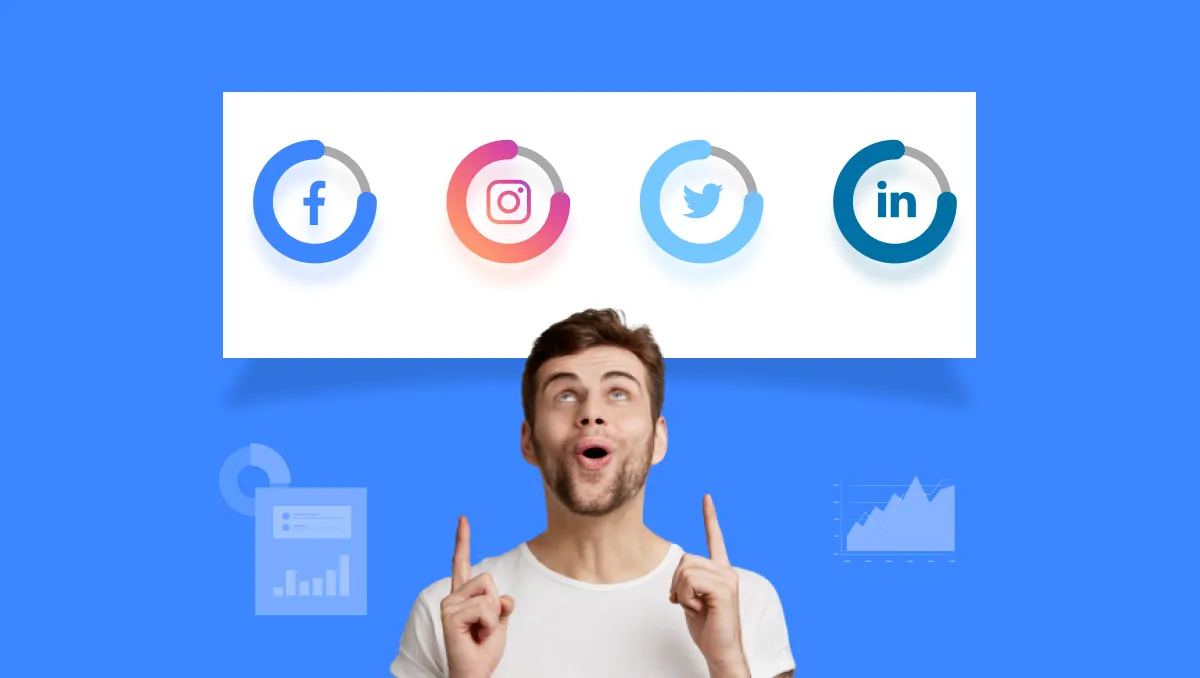In this chapter of the growth hacks series, I share some advance hacks for the marketers that handle multiple channels to generate demand. These channels would include setting up automation, leveraging chatbot marketing, influencer marketing, and more.
These tactics can help you meet marketing multiple objectives of social media engagement, lead generation, customer acquisition attributing to various channels.
In this chapter, you’ll learn how to use these growth hacks to:
- Distribute resources across multiple social platforms
- Drive sales with offers
- Collaborate with the right influencers
- Using bots smartly
- Post videos that get seen by your audience
- Turn your connections into leads
- Engage with your customers
- Do cold outreach with voice messages
[Advance Hack 1] Choose The Right Social Media Platform
Today, brands are using over 20 social media platforms. That’s just the popular ones. There are 50 social media channels available in different parts of the world. Hence, choosing a few platforms for marketing your products/services can be a difficult decision.
So, how do you narrow down the list of social platforms to the ones which work best for you?
When I was faced with this decision, I asked myself the following questions:
- Is my audience using this platform?
- Do the unique characteristics of this platform suit my brand’s message?
- How much time will it take (an estimate) for me to make a considerable impact on this platform?
The answers to these questions helped me filter the list down to 3-4 platforms. These questions will help determine which platforms are worth your time and effort. If you spend too much time and resources on a platform which the majority of your audience doesn’t use – your marketing efforts won’t yield any good results.
In addition to these questions, there are some other things you must consider.
Try to find out about the interests of your audience on each platform. Spend some time searching through the platform, look at the search results for keywords and hashtags (relevant to your niche). If you cannot have many conversations around these keywords and hashtags, you should switch to a different social media platform (or spend less time on this one).
The industry within which you are operating is also an important factor to consider while choosing platforms. This is exactly why you see B2C marketing on Facebook and Instagram successfully and B2B sticking to LinkedIn (where they have better chances of connecting with relevant professionals and businesses).
For instance, have a look at the average engagement rate per post various industries have achieved with 3 major platforms – Facebook, Instagram, and Twitter.
Fashion
- Facebook 0.11%
- Instagram 0.65%
- Twitter 0.006%
Food & Beverages
- Facebook 0.24%
- Instagram 1.10%
- Twitter 0.07%
Healthcare
- Facebook 0.51%
- Instagram 1.37%
- Twitter 0.09%
Education
- Facebook 0.15%
- Instagram 2.56%
- Twitter 0.06%
Homeliving
- Facebook 0.25%
- Instagram 0.84%
- Twitter 0.08%
Restaurants and Cafes
- Facebook 0.43%
- Instagram 1.41%
- Twitter 0.09%
Media
- Facebook 0.13%
- Instagram 0.91%
- Twitter 0.07%
Non-profit Organizations
- Facebook 0.1%
- Instagram 1.52%
- Twitter 0.06%
Ever thought the education sector wins big on Instagram? I didn’t either. But if you think in terms of the questions I listed for you previously, it makes sense. The target audience of businesses operating within the education industry is students (age group of 13 to 18 years) – most of whom use Instagram more than any other platform.
Lastly, consider your proficiency with the platform. If you are comfortable and well versed with a platform, then that should be your first choice. For other platforms, you can invest in some time and money in learning how to use those platforms to your business’s advantage.
Do establish your presence on relevant platforms. Much as you’d like to be omnipresent on social media, some platforms may be better suited for the nature of your business than others. For instance, local cake shops and florists may benefit more from the visual appeal of Pinterest or Instagram over the more formal LinkedIn. Similarly, a large accounting corporation may benefit more from Twitter and LinkedIn over Pinterest. Understand the functions and features of each network and identify the one that can be best used to market your products or services.
[Advance Hack 2] Create Special Offers For Each Platform
People like to get free things and discounts. As a result, coupon codes are quite attractive and have great incentives. Post these codes to every social network you’re using, and make sure you have specific codes for each site. This will help you to assess how each platform is driving sales.
Let’s say you are advertising your e-commerce website on Facebook. Giving a free coupon to those who download your mobile app and purchase your website is a great idea. This way, a person who has always wanted to buy a $20 pair of shoes but has been skeptical about it, will rush to download your app. Why? Thanks to your coupon, they will have to pay $5 less on their first purchase.
With promotions and other attractive deals, you can then remarket to them to keep them coming back for more.
What social media campaigns can I run using coupon codes?
Weekly/Monthly Offers
You must have seen May sale or April sale offers put out apparel brands. They are great examples of monthly offers. On the other hand, offers on Fridays are usually put out by restaurants and food delivery apps.
When you put out such offers every week or month, your audience will start looking out for them after a point in time – probably by following your social pages.
Pre-launch Offers
If you are launching a new product, this is a great way to create some buzz. This offer also plays well on the #FOMO part – who would want to miss out on using/buying the product even before it’s launched?
Create a list of these customers and keep retargeting them with special offers that invoke FOMO.
Holiday/Seasonal Offers
Spring sale, autumn sale, Christmas sale, Thanksgiving sale – this list is endless. Holidays and seasons provide an excellent opportunity for brands like yours to market their products/services aggressively. So go ahead and offer free trials, free home deliveries, discounts, steal deals, etc.
Loyalty Offers
These offers would include special benefits for people who like your pages, follow your brand’s social activities closely, engage with you on social media, share your content, buy/subscribe often, etc. When you use a coupon code for this offer, be sure to target these customers specifically. It gives them a great incentive to continue their association with your brand.
Pro-tip: You can offer them discounts for referring your product/service to their friends, relatives and colleagues. About 92% of people trust recommendations from people that they know. Spreading happy vibes is one of the best ways to grow your customer base exponentially.
Offers provided by influencers
Having difficulty telling people about your offers? Get an influencer on board, give him/her a coupon code, and ask him/her to post it on social media. Creating and adding a special brand hashtag is a great idea.
Now that you have an understanding of how you can use coupon codes on social media, you just need a tool to help you set coupon codes for each platform. This tool should also help you track these social campaigns and measure their results.
[Advance Hack 3] Partner with Micro-Influencers
Earlier the number of followers distinguished an influencer from another user. Today, the trend is shifting in favor of micro-influencers. These influencers have a more authentic audience. An authentic audience is one that consistently engages with the influencer and follows him/her for the value he/she provides.
That is how micro-influencers entered the pictures. These influencers may have an audience of anywhere between 3,000 and 50,000 followers. They share an authentic connection with their followers and in return, the followers trust them enough to follow their advice.
Micro-influencers have been known to generate 22 times higher conversion rates than others. As a result, they are 6.7 times more cost-effective (per engagement) marketing tools.
Why should you choose to collaborate with micro-influencers?
- They help you target a specific part of your audience: The followers of a micro-influencer are united by a common, specific. While there are ‘fashion’ influencers, a micro-influencer would be someone with a following interested in ‘eco-friendly fashion’. Now, that’s very specific, isn’t it? When you target a specific section, you know that they already have some level of interest in your product’s usability. Your chances of converting them increase considerably. So, if you are an eco-friendly fashion brand, this micro-influencer would help you make a great impact.
- They are great at being brand advocates: If they care about your brand’s message and feel that it’s what their audience would find to be valuable, micro-influencers will be enthusiastic about advocating your brand. This won’t be limited to one social campaign. They will market your brand consistently across all their social channels.
- They have more credibility: Their small group trusts their word. That is because they have built their following organically – by genuinely engaging with each one of their followers and adding value to their lives.
- They are able to drive better action: All the above-mentioned points help micro-influencers drive their followers to take action – sign up for a class, buy a product, register for a training session, submit content to be used by the brand, take part in contests, etc. Remember, the number one aim of micro-influencers is to build and maintain an active, passionate community. In order to collaborate with them, your brand’s campaign must align with their goals and beliefs.
[Advance Hack 4] Enhance Customer Engagement With Bots
Is it possible for you to interact with your audience 24/7? No right. I have a solution that will allow you to be omni-present for your audience. Enter chatbots.
A chatbot is an automated AI (artificial intelligence) system that is able to answer your customers’ questions via chat in real-time. Chatbots are able to identify keywords and answer the most frequently asked questions about the product/service. The customers get immediate answers to their questions and your brand makes a great impression. It’s win-win.
For instance, let us see how Facebook messenger bots help you grow your audience and increase your sales.
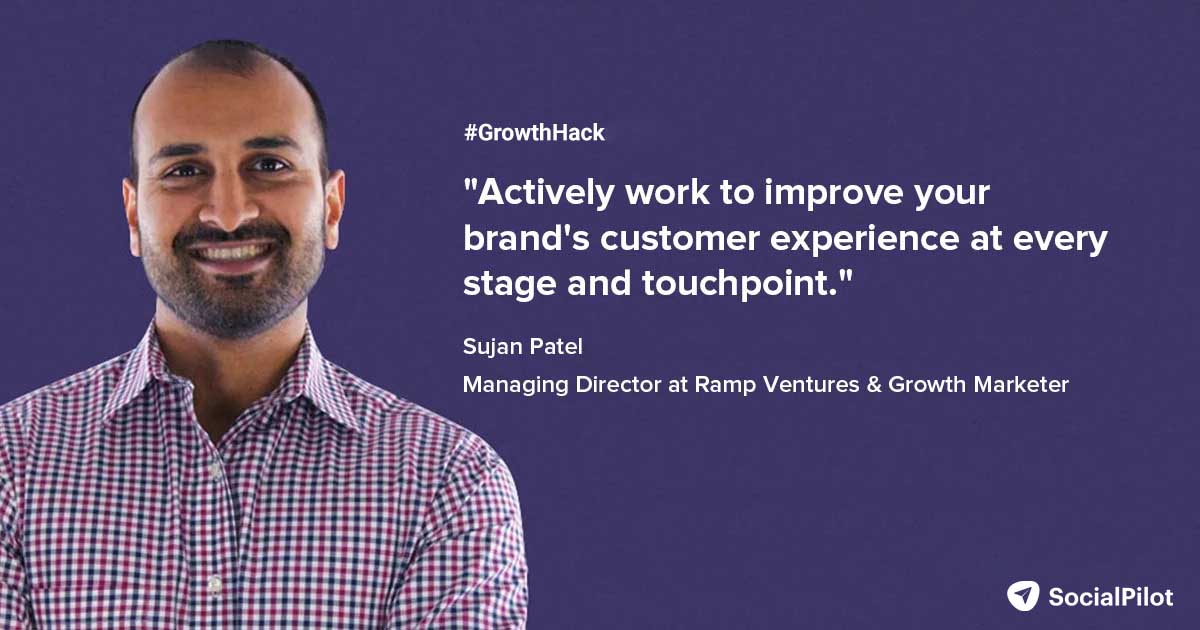
Facebook messenger bots work like an inbound marketing tool. They help automate the engagement of your Facebook Page and increase the likelihood that your visitor would have a positive view of your brand.
Say someone left a comment on one of your posts. Normally, this comment just stays unanswered until your team arrives at the office and starts work. With Facebook Messenger bot automation, the moment somebody leaves a comment on your post on your page, Facebook Messenger opens up and sends them a reply. Facebook then allows you (within the span of 24 hours) to send another message.
You get to send out an initial response, and then you follow up. After this point, if the person likes your response, he/she can continue the conversation.
This back and forth between your prospect can lead to many great things. It can be an opportunity for you to share your brand’s content with the potential customer. It can also lead to an actual sale. When somebody leaves a comment on your product listings, the bot can respond with the available options for a product. They can then select a product and make a purchase immediately.
This is a great opportunity because over 50% of all users use mobile devices to interact to surf the internet.
These real-time conversations also help you categorize your potential customers into various stages:
- Someone who is just browsing
- Someone who has made a decision (just needs to make the purchase)
- Someone who needs more information to make a purchase
This makes it easier for you to prioritize responses and understand what that person needs.
In other words, bots give them the answer they’re looking for precisely at the time they are most interested in buying the product or subscribing to the service.
[Advance Hack 5] Local Marketing Via Twitter
Twitter lets you search for specific terms and then target those terms based on geographic location. This is a great tool that can help you do real-time marketing within your local area.
For instance, if you run a bar in a certain town and someone within X kilometers tweets, “TGIF Now I can have a few drinks,” you can reply and tell him/her about your happy hour or any other exciting stuff you have that day.
Twitter features are aimed at helping you target locally:
Find your local target audience
Search your current tweets for a city, neighborhood, or a landmark. This gives you a list of recent tweets posted by people in that location. Review these tweets, see if you can reply to any of them, and provide them any offers or discounts.
Find popular people in your city
Enter your city’s name in the search box and review the list of profiles which mention the city’s name. If they have a good number of followers, reply to their tweets and ask them to check out your product/service.
Use Twitter’s advanced search
Twitter’s advanced search page allows you to filter tweets by the geographical location from which they were posted. For instance, filter tweets by your city’s zip code.
Use a Twitter listening/monitoring tool
This tool will help you track conversations based on the keywords you select. Say, you set a keyword like ‘Philadelphia Restaurants’.
Hi people, This is my first time in Philadelphia. And I am damn hungry. Could you please suggest some good restaurants nearby?
Reply: Hey Simon! We are located quite near to your location. Are you in the mood for a cheesy pizza? 😉
Saw what happened there? The tool showed you a tweet with the keywords, and you could use this opportunity to market your business in real-time.
[Advance Hack 6] Live-Tweet Conferences and Events
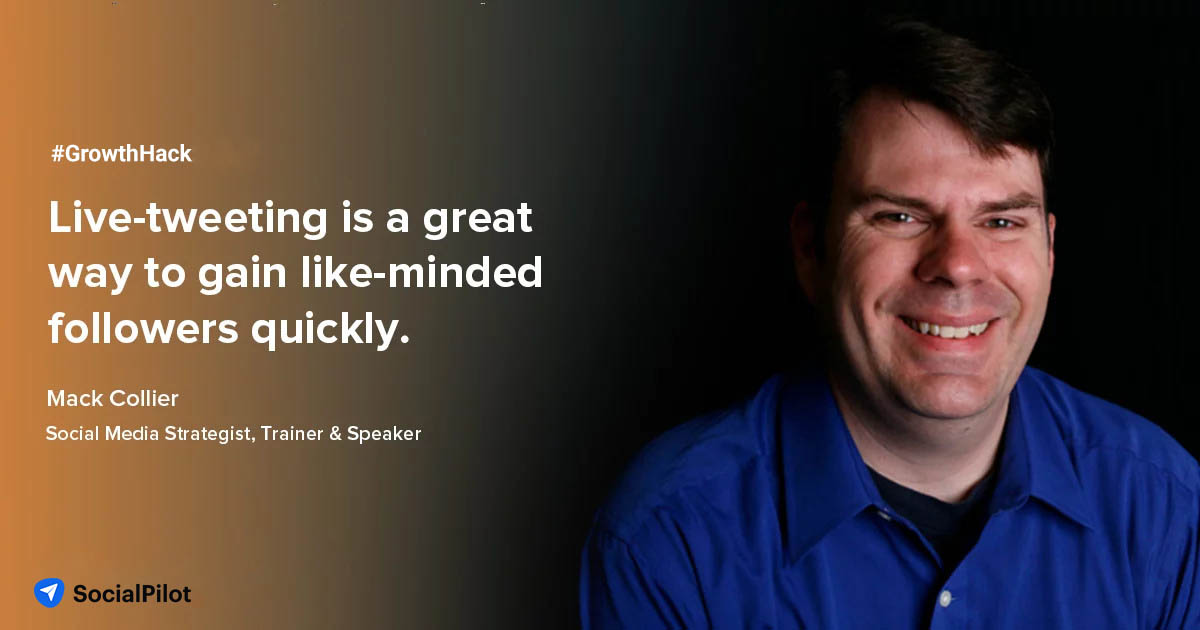
This isn’t just a trend. It has helped brands create awareness on Twitter.
Attending an event or conference and telling your audience about in a post later – is a thing of the past. Today, your audience wants to feel a part of that event or conference. Live-tweeting has many other advantages:
- If someone (who is not your brand’s follower) is interested in that event, he/she will see your tweets and immediately check out your profile.
- You get to join all trending conversations about that event or create a Twitter thread that trends. This gives your brand great visibility.
- Your followers turn to you for useful and interesting information about that event. There’s a chance they’ll keep checking their Twitter to see all your live-tweets.
- You get to use the event’s popularity to your advantage.
When Google conducted its marketing event this year, there were hundreds of brands and Twitter users live-tweeting it.
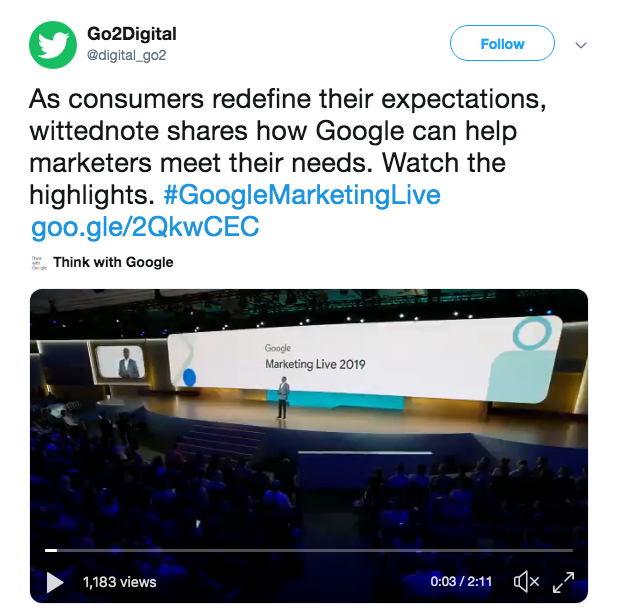
They knew it was a trending topic and Google even created a hashtag encouraging everyone to live-tweet about the event – #GoogleMarketingLive.
However, there are few things you must keep in mind to utilize this hack:
- Add a short video or photo while live-tweeting. Including a visual will get you 150% more retweets.
- Inform your followers a month ago and keep reminding them with tweets that you’ll be attending the event.
- If it’s a conference where there is going to be a Q&A session, ask your followers to send the questions that you can ask the speakers on their behalf.
- When you live-tweet, mention the handle of the speakers. This way their followers will also be able to see your tweets.
Prepare for the live-tweets beforehand. Have a list of Twitter handles of all speakers, the official hashtag of the event, organizers’ handles, other relevant brands, and Twitter users who are also going to be attending the event.
Before you begin live-tweeting, list down the goals you wish to achieve with this activity. Live-tweeting has helped brands achieve the following:
- Creating brand awareness
- Increasing the number of Twitter followers
- Establishing a brand’s authority in the industry
- Connecting with leaders and influencers
Lastly, don’t forget to measure the results of this marketing activity with a tool. While Twitter analytics will give you a rough idea of how your tweets performed, a Twitter analytics tool will help you gain better insights.
[Advance Hack 7] Use Voice Message In DMs
Last year, Instagram released voice direct messages for both one-on-one and group chats. While average users are using this feature quite as much, this presents a great advantage for marketers.
Voice direct messages work really well for B2B business or businesses that have clients. You see, in such cases, the personal relationship between the sales representative and the potential client is very important.
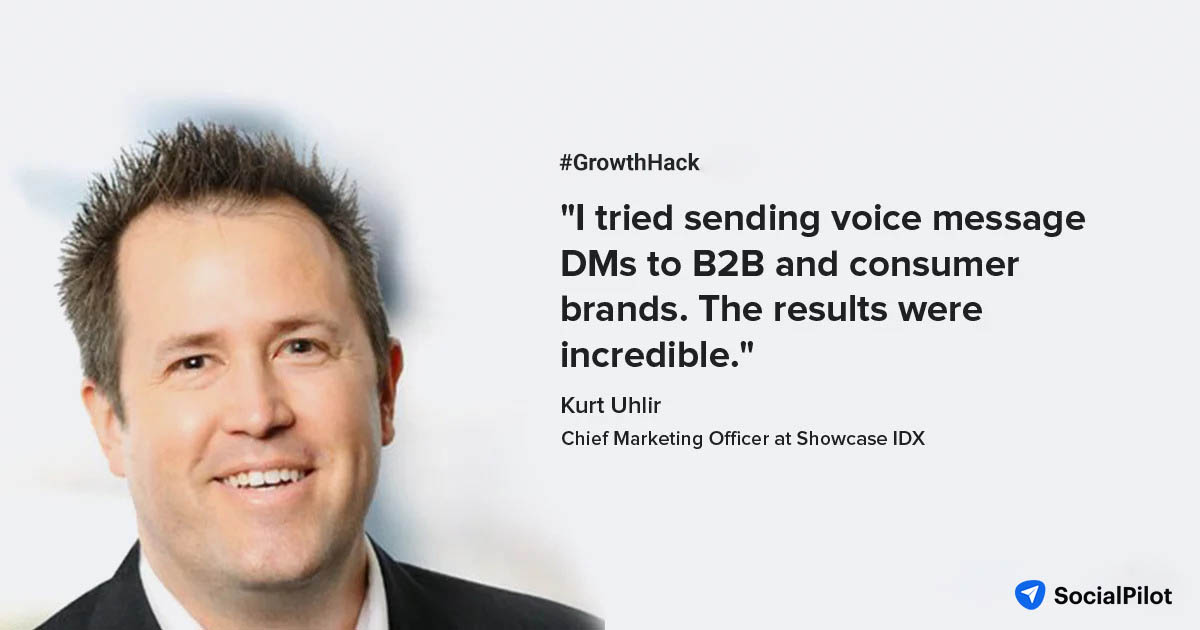
Instead of sending cold messages or emails, try sending them a voice message DM. This works well because:
One, you have not fixed a call with that person. So, even if the message has you talking to them, you are not intruding. They can check your message if they’re interested or if they have time.
Two, voice message DMs have better chances of getting responses. Why? That’s because people like hearing a human voice explaining to them why they are reaching out.
If you are sending voice message DMs to potential clients, be sure to keep it under a minute. Begin with telling them that you won’t take a lot of their time (just a minute). Be direct – come to the point quickly. Explain to them why you think they would be interested in the subject of the message. For instance, “I saw your comment on a LinkedIn post that talked about the difficulties faced by start-ups in accounting. Our software has been making accounting less daunting for 80 start-ups based in the USA. If you are interested, I can share some case studies with you.”
Similarly, voice DMs work really well when your brand’s followers and customers send you a message. Getting a voice message from you makes that person feel special and might encourage him/her to become a customer after all.
See? Cold message, but better. Though Instagram is mostly used to boost brand awareness, marketers can also send direct messages to reach people on a personal level. If you do it well and strategically, you can get a significant increase in engagement and sales as well.
[Advance Hack 8] Create Product Groups on LinkedIn
Apart from having a LinkedIn company page, it’s also important to create product groups. LinkedIn features like product groups are efficient. These are groups created around a specific product where customers of the product can engage with each other. This will help you segment your audience on the basis of their product interest and, as a result, find better ways to engage with them.
Such LinkedIn groups not only provide a common forum for all your customers to discuss the product but also help your marketing efforts in the following ways:
- It provides a great platform for your customers to share their individual experiences of using a product. Their stories can help you chart out your brand’s customer experiences and make improvements wherever needed.
- The customers’ positive experiences will make for great testimonials. If they are already sharing it on the platform, they will be more than happy to do a testimonial video for you.
- You’ll get many suggestions on how to develop your product or which new features you should consider adding. You can run polls – just drop a question and encourage them to answer in the comments.
- This group can help you gather data about your customers’ buying behavior. This data will make for a great resource that you can share with your subscribers later.
While your brand is engaging with customers within these groups, ensure that you are giving them a consistent brand experience. For that purpose, it’s important that you optimize your groups:
- Include branded and non-branded keywords in the group description. Make sure it sums up the essence of the group accurately. Also, add keywords in the group’s title, so it ranks well on Google (thus giving you greater organic exposure).
- Do not forget to include your business’s website or blog URL in the group profile. Also, include your blog’s RSS feed in the group so that it automatically gets shared with every group member when you publish a new post.
- Get into the habit of nurturing the group by sending messages to members every week and driving traffic to your blog or website.
- Help others build connections by introducing people who can do business or form partnerships together. Ensure that the group successfully fills the specific needs of your target audience.
Remember, set and share the group’s guidelines with all members. This regulates all conversations taking place within the group. If you find any post or comment that is irrelevant to the group’s theme, take action. Maintaining the relevance of all content shared in the group is absolutely necessary if you want the members to be interested and active in the group.
[Advance Hack 9] Increase Your LinkedIn Network
Yes, 10,000. Don’t worry if you don’t know how to achieve that. I present to you a magic tool called LinkedIn Helper.
Linked Helper is a tool that allows you to create a list of people who you would like to connect with. The tool then sends them connection requests via your browser. This way, you will be able to connect with your email contacts, phone contacts, and even friends of your friends.
People use LinkedIn to find meaningful connections. The ‘meaningful’ here refers to a connection that becomes an advantage for them. This advantage could be in the form of information, advice, or introductions. If your goal is to find leads or customers/clients, you must first determine the value you will be providing to them.
LinkedIn Helper helps you connect with people who already know (1st degree connections) and those who know the people you know (2nd degree connections).
How does one connect with potential customers on LinkedIn?
- Make a list of all job titles: These are the people that could be your potential customers or clients. Create a message template for them. It will help if you choose people who are the decision-makers. So, instead of including the company’s product manager in your list include the CEO. He/She will be in a better position to take the desired action.
- Find a point to start conversations: It could be an article published by them, or a post they made on LinkedIn recently. This helps you set the context. It doesn’t look like you are trying to shoot in the dark. You found something that led you to believe they would benefit from connecting with you.
- Find connections through content: Type in a job title in the search bar and filter it with ‘content.’ Now, check out the people who are active and engage with a certain kind of post (ones that are relevant to your brand). Now, check out their profile and see if they would make for a good connection.
Remember not to mention anything about your product or service – when you send them a message to connect. Nobody likes a direct sales pitch on social media. After they become your connections, provide them with a good share of branded content. The trick is to keep your product/service in their mind long enough to make them check out your website and think of buying or subscribing.
Considering LinkedIn is a professional network-building platform, social media marketing of your products and services will be a bit different here. How so? You’ll be directly marketing here as a business owner and not your products or services. In other words, you’re the “brand” that you’ll need to promote on this platform. By promoting you as a brand, you’ll have the opportunity to market your products and services to other entrepreneurs and executives on the platform. Plus, you’ll be able to create new and important business connections as you connect with more people on LinkedIn.
Before you start sending out invites, ensure you have updated and optimized your LinkedIn profile:
- Syndicate your LinkedIn profile with your brand’s website.
- Write interesting status updates. These are brief statements about you, which you think can be useful or interesting to your potential connections.
- Promote your brand by adding PowerPoint presentations, SlideShare presentations, and Google Docs slides to your LinkedIn profile.
- Join relevant groups and engage with the members actively.
- Follow industry leaders and comment on their posts.
See you on the other side of 10,000 LinkedIn connections 🙂
[Advance Hack 10] Publish Native Videos
On Facebook, native videos get 10 times higher reach as compared to YouTube links. At first this surprised me a little. But then I conducted an experiment.
I shared a Facebook post with a link to a YouTube video, asking my friends to check it out. Next time, I downloaded that video and uploaded it while posting on Facebook.
Case 1: Three days after I had published the post, I received just one share. I sent out a message to my friends asking whether they checked out the video. As it turns out, they didn’t see my post in their feeds.
Case 2: The post received 30 likes, 2 shares, and 3 comments.
Conclusion: When you include links of videos from another platform, Facebook’s algorithm prevents them from showing up in your others’ feeds.
It’s like the social media platforms are at war with each other. But marketers have found a smart strategy to conquer the algorithms – share native videos.
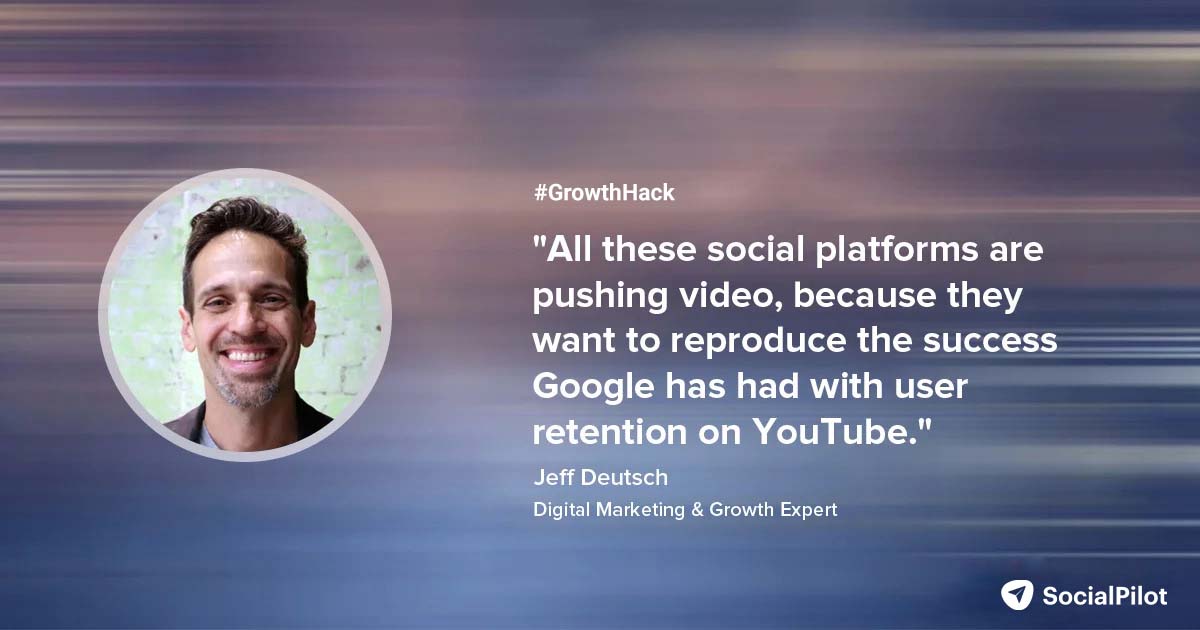
What are native videos?
Native video is video content that is uploaded directly to (or created on) a social network and played in-feed on that platform. It lets you upload video files and record videos with the in-app camera. When you post a native video, it plays within that social platform (as opposed to playing it on another).
Besides conquering the algorithms, there’s another big advantage of posting native videos. When someone checks your or brand account’s video library, they’ll be able to see all these videos. Video posted as links don’t show up in the Facebook or Instagram library.
Also, remember to make your native videos easily searchable:
- Add target keywords in the title of the video. An expert tip is to include a colon “:” after your main keyword and rephrase the title for optimal effect. For instance, your video on mortgage saving tips can be titled “Mortgage Saving Plans: 20 Tips for Financing Your New Home.”
- Make your descriptions keyword-rich, interesting, and elaborate. This will make it easier for people to search for your content on YouTube. Begin all your descriptions with a complete URL. Include other URLs throughout the description for better targeting.
- Ensure that all relevant keywords are included in the tags section. This is one of the easiest ways to make videos easily searchable.
Short native videos are simple to make and publish. There’s no reason why you shouldn’t publish at least one video per week to boost your visibility and grow your following.
I hope these hacks are your cup of tea. All the growth hacks in the series were shared after conducting actual experiments. You can tailor these hacks according to your marketing objectives. If you wish to discuss more such hacks with other fellow marketers, make sure to join our Facebook community.


